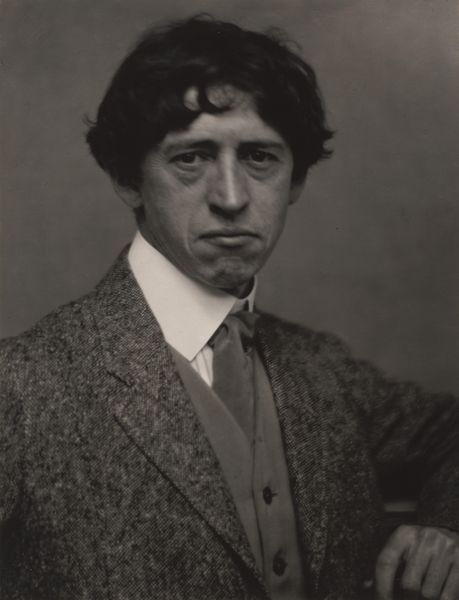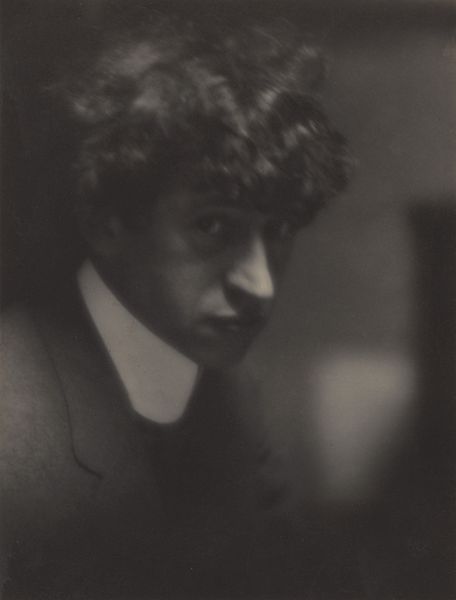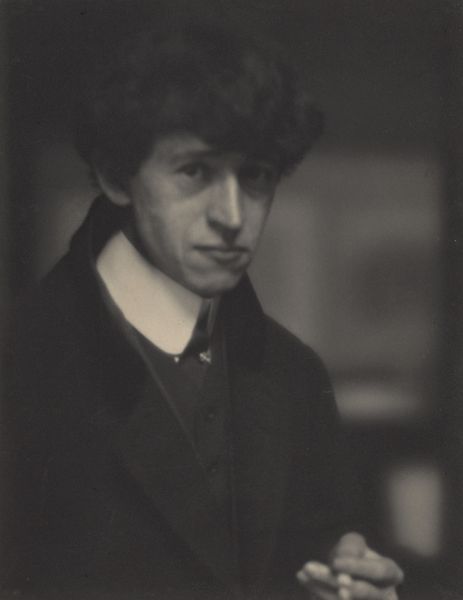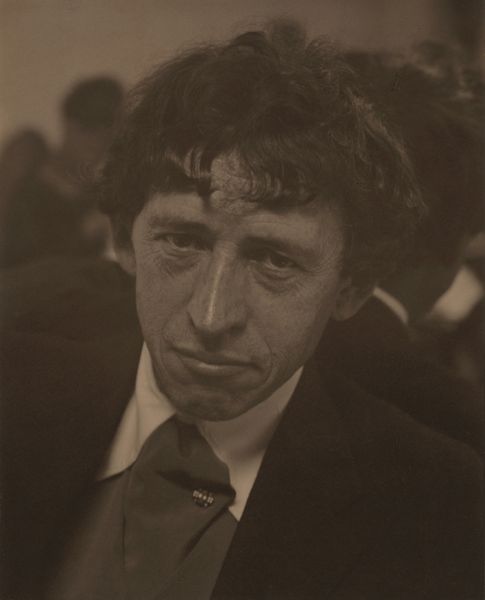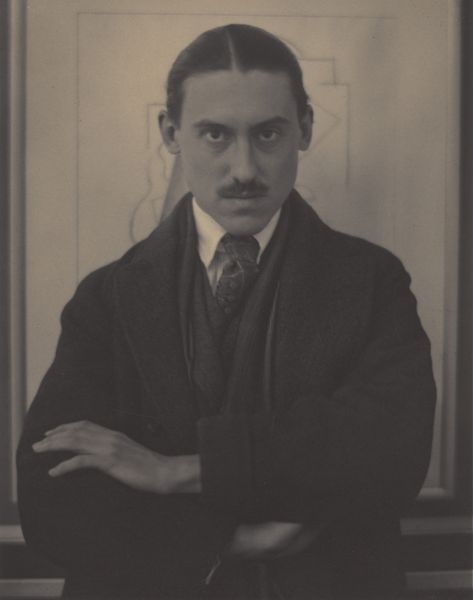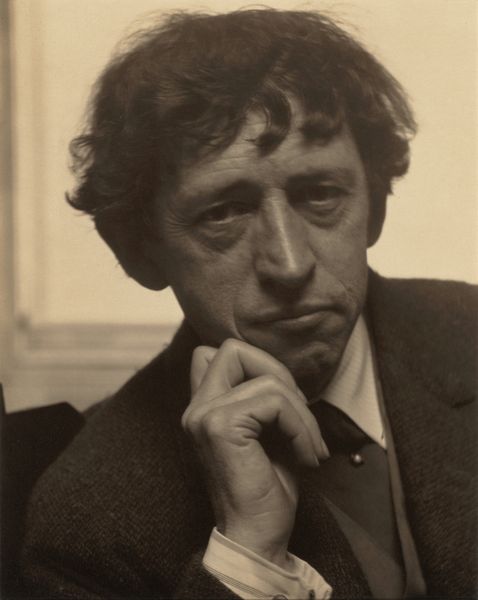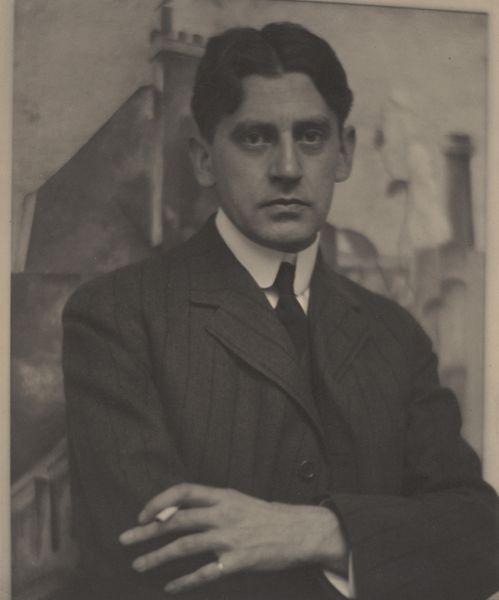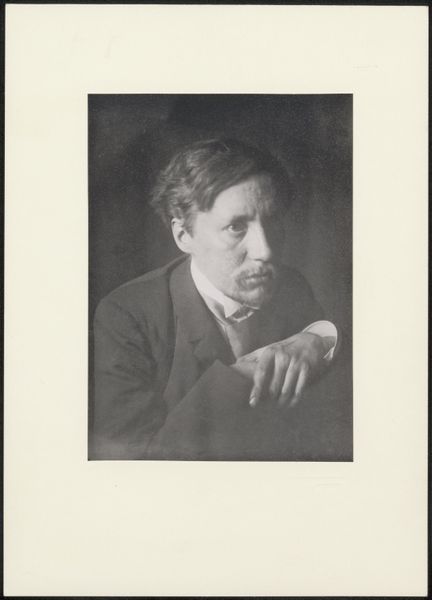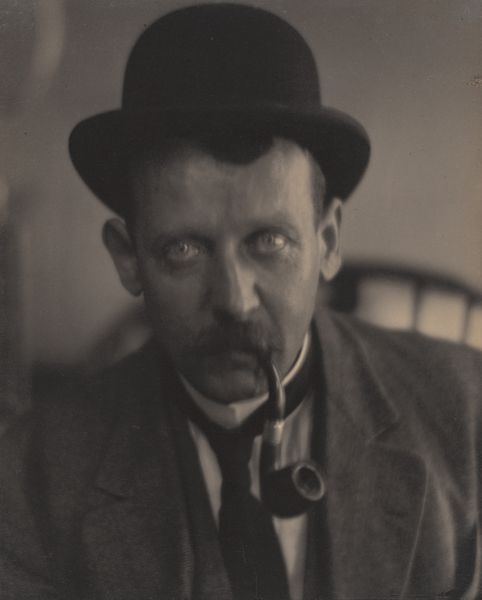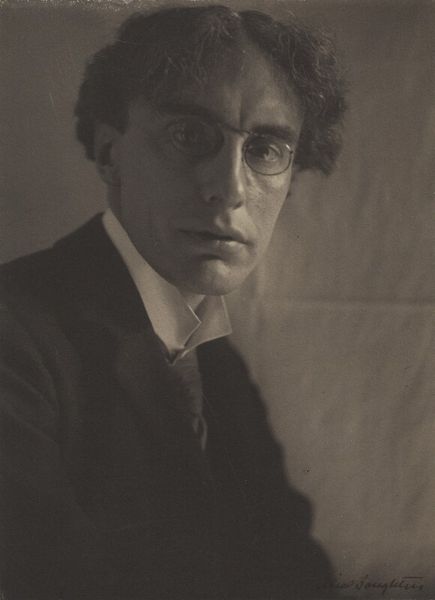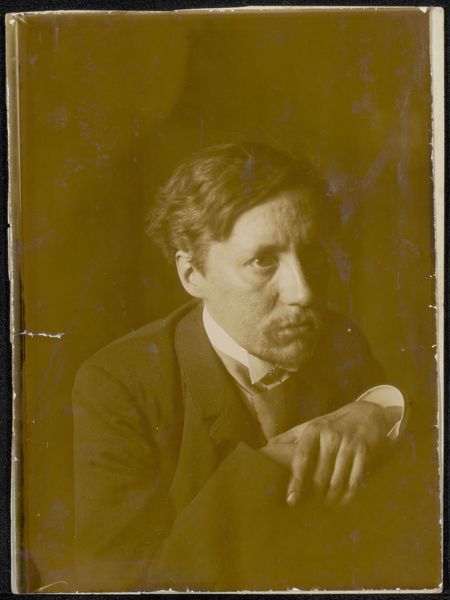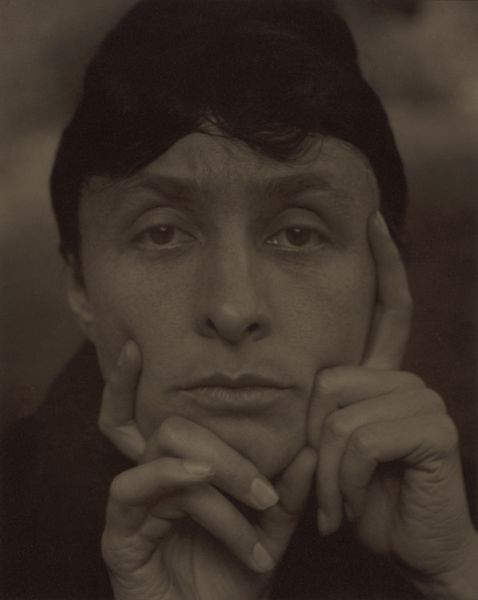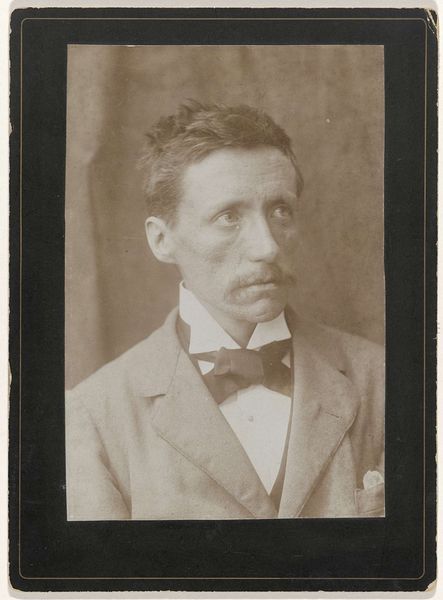
photography, gelatin-silver-print
#
portrait
#
pictorialism
#
portrait
#
photography
#
historical photography
#
gelatin-silver-print
#
modernism
#
realism
Dimensions: image: 24 × 18.8 cm (9 7/16 × 7 3/8 in.) sheet: 24.7 × 19.8 cm (9 3/4 × 7 13/16 in.) mount: 51.9 × 38.8 cm (20 7/16 × 15 1/4 in.)
Copyright: National Gallery of Art: CC0 1.0
Editor: This gelatin-silver print, "John Marin," was created by Alfred Stieglitz in 1913. There’s a somber quality to the portrait; Marin looks almost weary. What aspects of its history do you find most compelling? Curator: Well, given Stieglitz's prominent role in promoting modern art in America, this portrait transcends being a simple depiction of Marin. Consider Stieglitz's gallery, "291," at that time. How did its exhibits challenge conventional artistic tastes? Editor: I understand that Stieglitz championed European modernists and American artists pushing boundaries. This photograph seems less radical than some paintings exhibited at "291." Curator: True, but its radicalism lies in Stieglitz's Pictorialist approach. He manipulated the photographic process to give it an artistic quality that imitated painting or drawing. And how does this strategy interact with photography’s growing claims to objective truth? Is Stieglitz staging Marin in a similar manner that painters are staging their models at that time? Editor: I hadn’t considered that manipulation. It definitely blurs the line between objective record and artistic interpretation. The soft focus contributes to that, too. It's as if Stieglitz wanted to legitimize photography as fine art, and even imbue Marin with the sensibility of an artist? Curator: Exactly! Furthermore, "291" played a crucial role in shaping the American art scene. How did its existence foster the acceptance, or the rejection, of modern art among critics and the public? Editor: It's fascinating to think of "291" as a battleground for artistic ideas, and Stieglitz positioning Marin in that struggle, literally and figuratively. I’ve got to do more research about its reception at that time! Curator: Absolutely! Understanding the social and cultural forces surrounding the work helps illuminate its complexities.
Comments
No comments
Be the first to comment and join the conversation on the ultimate creative platform.
